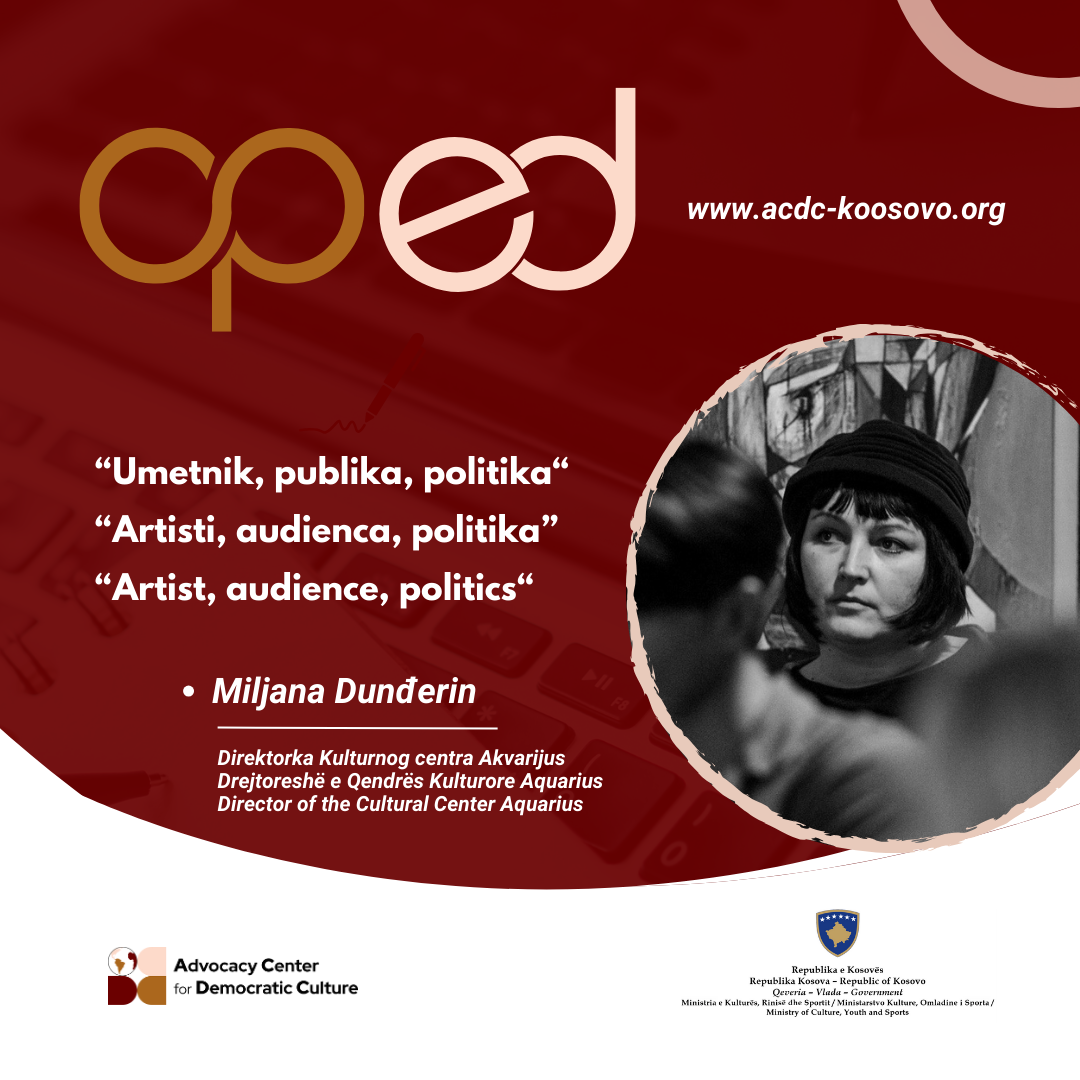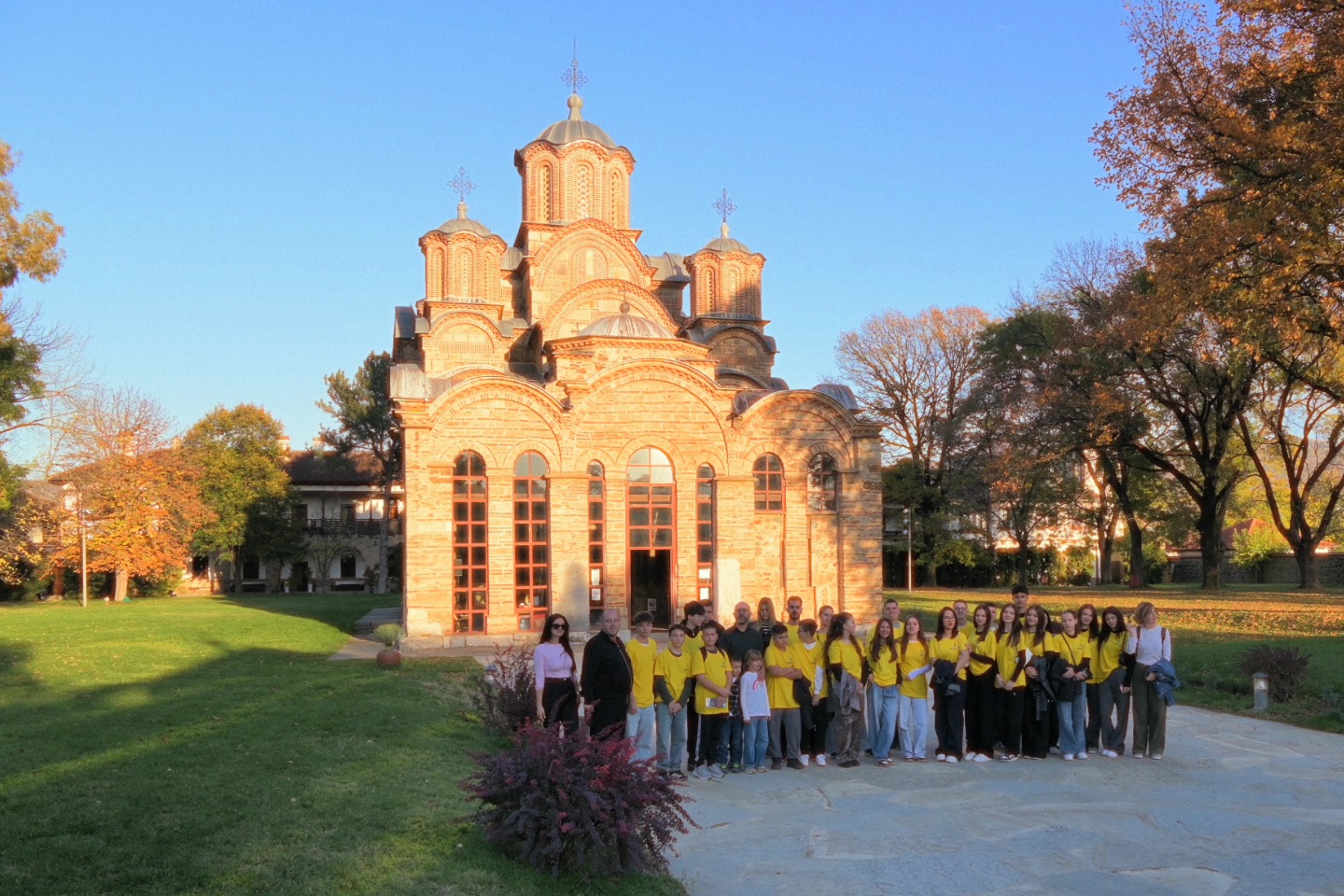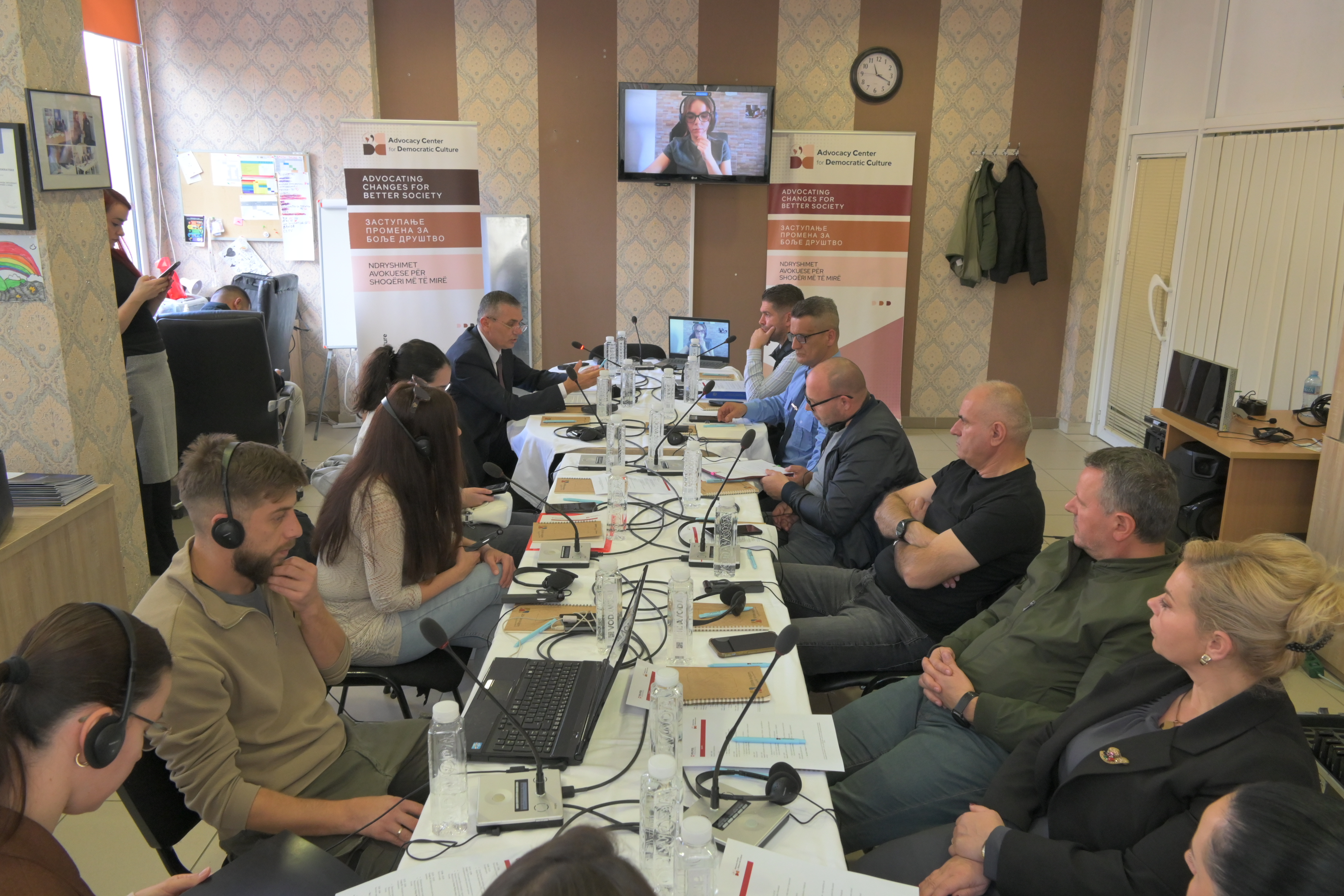14.04.2024. » 19:51
OP - ED Artist, audience, politics
The social significance of art is often linked to social cohesion. The assumption is that artistic programs, whether through observation or active participation, create a common basis for a particular social group and facilitate the exchange of ideas, feelings, and thoughts.

The social significance of art is often linked to social cohesion. The assumption is that artistic programs, whether through observation or active participation, create a common basis for a particular social group and facilitate the exchange of ideas, feelings, and thoughts. In this way, art serves as a cohesive factor for bringing together a community. Fans of music bands, cultural and artistic societies, cultural centers, associations of enthusiasts of a particular artistic movement or artist, clubs of friends, and patrons of cultural institutions - all these are forms of association and connection around a work of art or other artistic value. Many studies on the social significance of art note that art projects have contributed to the creation of new friendships, increased tolerance and understanding, conflict resolution, increased desire for belonging, intercultural, intergenerational, and interethnic understanding, strengthening communities, and reducing negative behavior, indicating that cultural participation is a factor that positively influences social cohesion. Cultural participation is also linked to cultural diversity, which is at the very core of pluralistic societies. This is also a reason to support the financing of artistic and cultural programs, especially those dealing with the inclusion of marginalized groups, intercultural mediation, and dialogue. A society that cares about citizens' rights to access culture is more likely to succeed than one where the right to active participation plays a less significant role.
In many countries, cultural participation represents a way of democratizing and politically engaging the population. This idea is encapsulated in the concept of cultural citizenship. The existence of a civic, democratic society presupposes an individual's sense of belonging to society and its values, as well as taking on responsibilities and rights that arise from it. These rights are political and economic, but also cultural because the domain of values, ideas (and ideologies), habits, practices, and personal and collective expressions primarily belongs to culture.
Cultural strategy primarily entails conceptual policy and includes multiple activities aimed at acquainting, presenting, analyzing, and producing artistic individual and collective works and engaging in public discourse with artists. The intention should be to bring people closer to the process of creating artistic works, producing them, exhibiting them, interpreting them, and critically reflecting on them in order to strengthen the connection between artists and their audience, their engagement, and involvement in artistic production.
Previous discussions on the "artistic field" have focused on art institutions (within the realm of the state and the market) and education (public and private). I believe it is necessary to open up the relationship established within the structure of the artwork itself, which is the relationship between the artist and their audience. These are the people for whom the work is intended, and whose aesthetic judgment is expected if it is a work of art.
Currently, the domain of cultural policy is attempting to find a balance between the power of political authority (parties), expert administration (whose power is guaranteed by its permanence and proximity to the authorities), and the intellectual and artistic elites, who, in their struggle for the democratization of society, have managed to secure a high degree of autonomy in the cultural domain, so that the management of the public cultural sector is left to their expertise, while any decision by the authorities or administration to reduce funds for a particular institution or event is seen as "censorship" of their actions. There are several basic parameters for considering the democratic nature of cultural policy. These include the model of cultural policy, decision-making mechanisms, diversity of instruments, public dialogue (establishing consensus on the most significant strategic issues among sectors), and the transparency of the entire model. Of course, the democratic nature of the model is not yet a guarantee of the quality of cultural policy, but it is one of the key prerequisites because experience shows that successful "authoritarian" cultural policies have been very few; on the other hand, successful state models are scarce. For the democratic principle of cultural governance to be realized, it must not be influenced by party politics through indirect mechanisms and party channels, nor should there be self-censorship in the field of art.
The essence, therefore, lies in artistic criticism and its development. Encouragement for criticism, as it serves as the intermediary between the work of art and the viewer, or the audience. Artistic criticism cannot be negative but exclusively affirmative - even when guided by the critical consciousness of socially engaged individuals.
Miljana Dunđerin, Director of the Cultural Center Aquarius
Latest news







